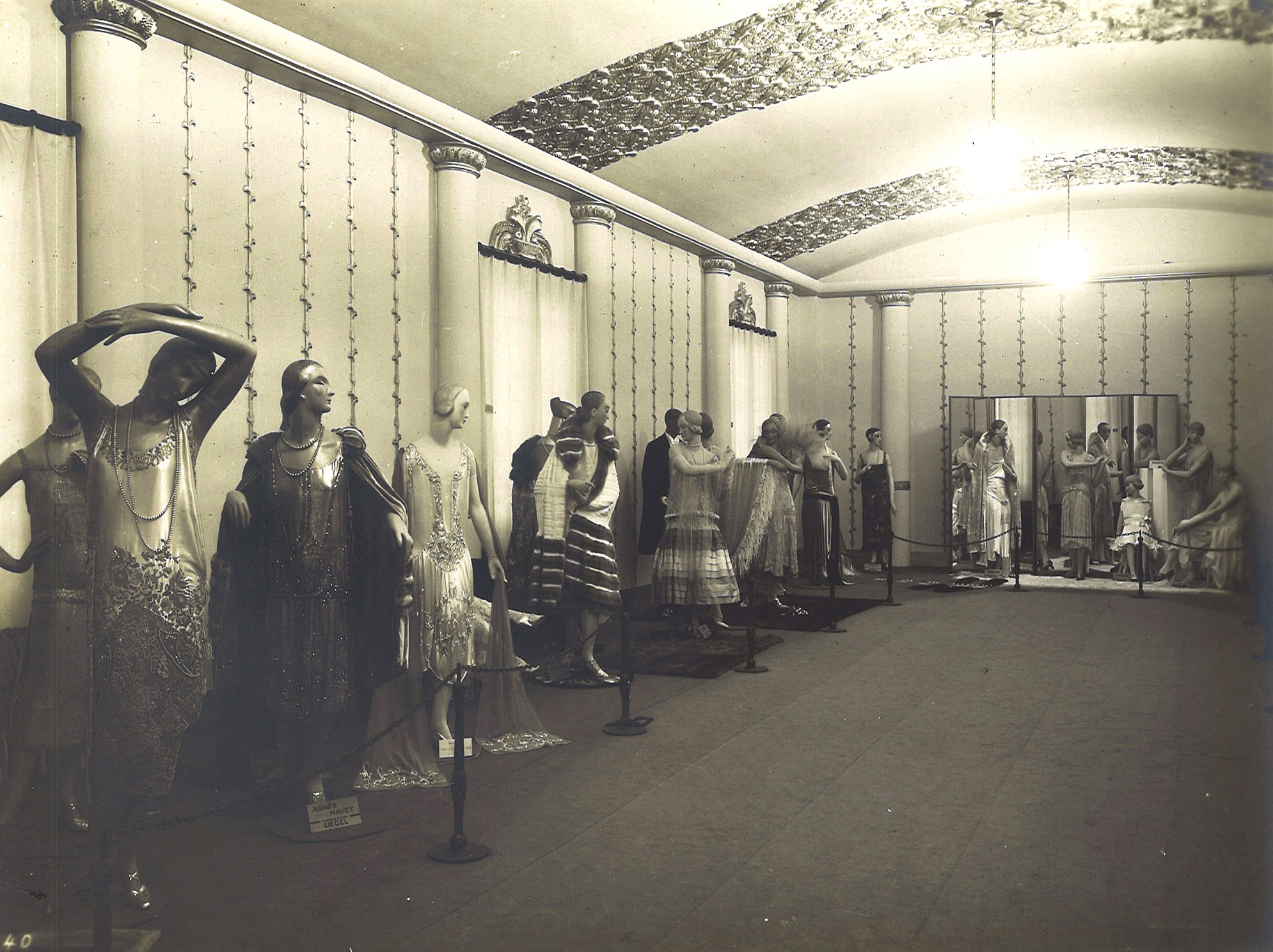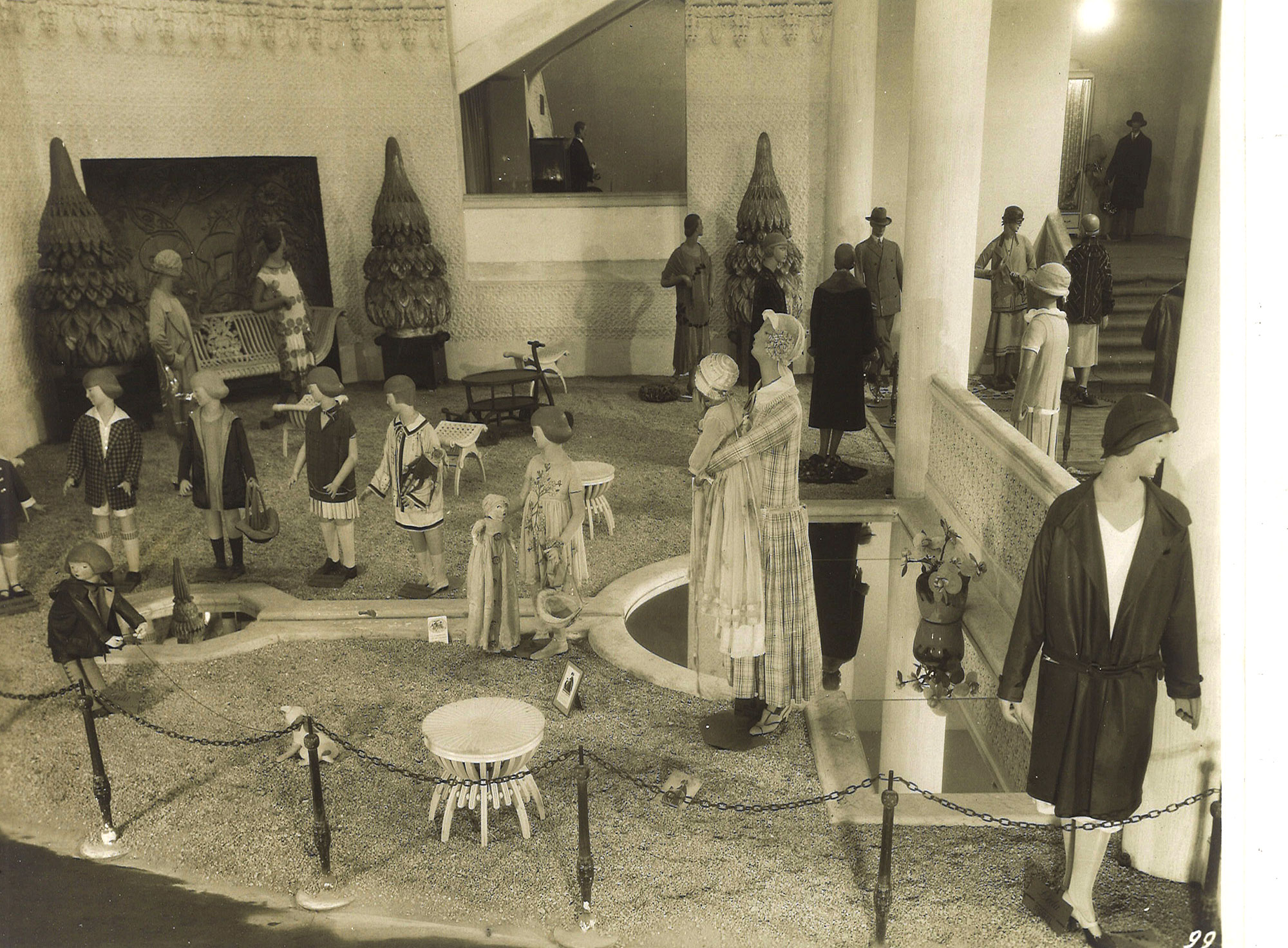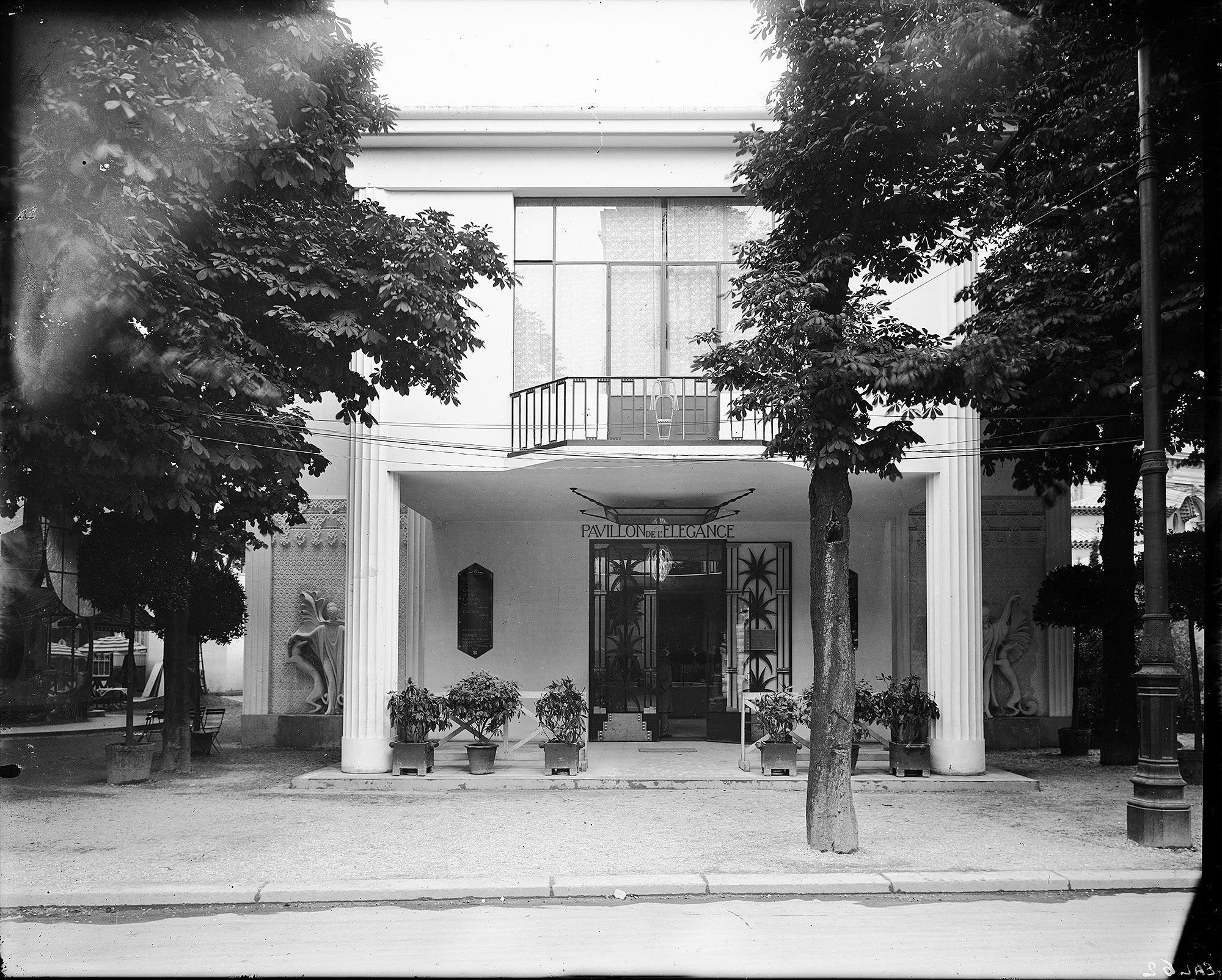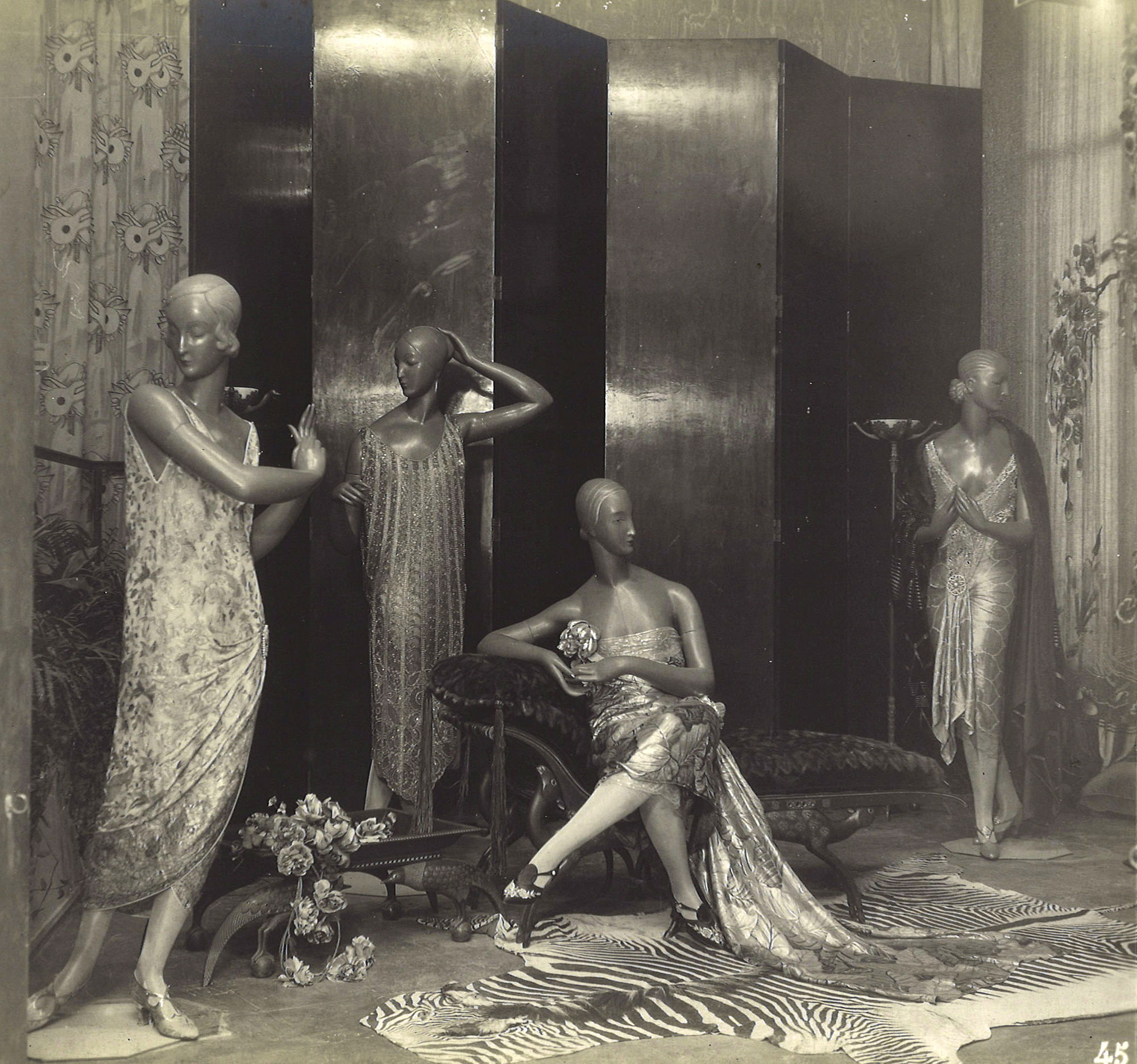


If you want to use this picture, please contact our library
The International Exposition of Modern Decorative and Industrial Arts was held in Paris, on the Esplanade des Invalides, along both banks of the Seine and in and around the Grand Palais, from April to November 1925. As a token of its importance, two major sites were devoted to fashion: the Grand Palais and the Pavillon de l’Élégance on the Cours-la-Reine. As chairwoman of both the international awards jury and Classe 20 (Clothing), Jeanne Lanvin played a key role. She was also in charge of selecting exhibitors and the exhibition’s architectural décor. Intent on highlighting the unity of French production, she entrusted the design of the Classe 20 stands in the Grand Palais and the Pavillon de l’Élégance to two close acquaintances, the architect Robert Fournez and the interior decorator Armand-Albert Rateau.
Their design for the Grand Palais was inspired by a luxury spa hotel. Jeanne Lanvin exhibited there with seventy couturiers selected for their “modern” creations, on either side of the “Allée de la Parure.”
On the Cours-la-Reine, the Pavillon de l’Élégance, ideally located next to the exhibition’s main entrance, was reserved for the haute couture elite. Echoing the Classe 20 section in the Grand Palais, four prestigious houses, Lanvin, Callot, Jenny and Worth, exhibited there with the jeweller Cartier. The building, designed by Fournez and decorated and furnished by Rateau, resembled a private residence. Its uncluttered architecture emphasised the sculptures on the facade by Paul Plumet, Rateau’s assistant, and the exterior and interior ironwork by Baguès Frères, the firm that produced Rateau’s bronze objects (lighting, furniture, etc.).
Another example of Jeanne Lanvin and Armand-Albert Rateau’s collaboration, the Actress’s Dressing Room in Classe 25 (Theatre), was located on the first floor of the Grand Palais. Although small in size, it reflected Jeanne Lanvin’s passion for the theatre, both as an entertainment and as an aspect of her creation. Like many couturiers, she dressed the actresses of her time both on and off the stage, including her friends Jane Renouardt and Yvonne Printemps. The Théâtre Daunou in Paris, owned by Jane Renouardt and Jacques Wittouck and decorated by Lanvin Décoration in 1921, is one of the emblematic examples of the complicity between the worlds of haute couture, the theatre and interior decoration.


Les mannequins sont d’André Vigneau pour Siegel et portent des vêtements de Jeanne Lanvin.

Vue de l’intérieur prise du 1er étage. Au rez-de-chaussée, le visiteur était accueilli par quatre mannequins Siegel, figurant des danseuses et vêtus des modèles des quatre couturiers, Jenny, Callot Soeurs, Jeanne Lanvin et Worth.
Vue de l’intérieur : la balustrade en fer forgé et les lustres en bronze argenté sont de Baguès Frères. Au centre, on aperçoit les vitrines de la Maison Cartier.
Les mannequins sont d’André Vigneau pour Siegel.
Le mobilier et les luminaires de Rateau sont identiques à ceux de la chambre de l’hôtel particulier de la couturière, 16, rue Barbet-de-Jouy.
ARMAND-ALBERT RATEAU (1882-1938), décorateur
BAGUÈS FRÈRES, fondeur
Paris, 1924
bronze fondu et patiné vert antique, marbre noir à bordure de marbre blanc, bouton de tiroir en ivoire et bronze, miroir double face mobile avec trois lampes
ARMAND-ALBERT RATEAU (1882-1938), décorateur
BAGUÈS FRÈRES, fondeur
Paris, vers 1925
bronze fondu et patiné vert antique, albâtre

ARMAND-ALBERT RATEAU (1882-1938), décorateur
BAGUÈS FRÈRES, fondeur
Paris, vers 1925
bronze fondu et patiné vert antique
Ce modèle, créé pour la duchesse d’Albe en 1921, figurait également sur la terrasse attenante au boudoir de Jeanne Lanvin
ARMAND-ALBERT RATEAU (1882-1938), décorateur
BAGUÈS FRÈRES, fondeur
Paris, vers 1925
bronze fondu et patiné vert antique, marbre noir et blanc
Un modèle identique se trouvait dans la chambre de Jeanne Lanvin.